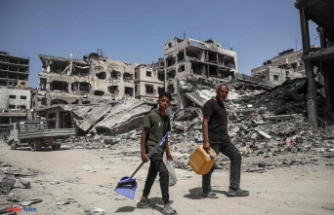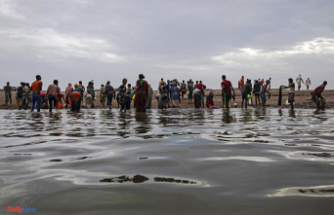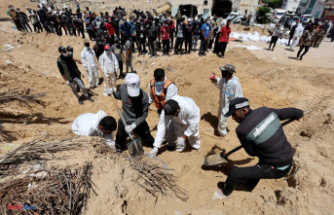The world's leaders have pledged to limit Earth's temperature rise to 1.5 degrees Celsius (2.7° Fahrenheit) below pre-industrial times.
What does it feel like?
Because you might not notice any changes in the average temperature, it's hard to communicate. Depending on where you live you may notice extreme heat.
Columbia University's Climate School recently published a global dataset that included estimates of population and temperature to better understand the problem. The data, which spans 1983 to 2016, was analysed by the Associated Press. It revealed that extreme heat exposure has tripled in the past 30 years and now affects around 25% of the world's population.
WHAT IS THE HEALT MEASURED?
The hottest daytime temperatures rise with the global average temperature rising. Heat stress can lead to heat exhaustion, which can cause severe heat-related illnesses.
Heat Stress Can cause a variety of health problems including heat stroke, cramps, and rashes. It is not just hot air that can cause it. Humidity, wind speed, and amount of shade are all important factors.
The heat indicator is something you may be familiar with. It takes into account temperature and humidity to show what it's like to be in the shade on hot days. The heat index does not tell you how it feels to work in full sun on a hot, windless day.
Climate scientists and meteorologists are increasingly advocating the use of another metric to understand extreme heat. It's called Wet-bulb Globe Temperature and takes into consideration temperature, humidity, wind speed as well as sun angle, cloud cover, and temperature.
To better understand the number of people affected by dangerously high temperatures and their locations, the new data uses both population and wet bulb globe temperature estimates.
People are advised to take breaks if working outside when the temperature of the wet-bulb globe exceeds 30° Celsius (86° Fahrenheit).
HEAT EXPOSURE IS ON THE RISE
The researchers averaged temperatures from 13,115 urban centers in , a dataset created by the European Union to match heat measurements with population estimates.
Nearly half of the urban centers in the world experienced an increase in heat exposure.
These areas were home to just under 1.7 million people in 2016, with most of them in Asia and sub-Saharan Africa.
The worst affected region was south Asia. India alone had 37% of those living in areas where extreme heat is increasing.
INCREASES IN HEAT EXPOSURE
Dhaka, Bangladesh saw a more than threefold increase in population from 7.7 million people in 1983 to 24 millions in 2016. The city saw a growth of more than 16,000,000 people. However, the number and severity of extreme heat days increased by 1.5 days per year. Dhaka now experiences about 50 more dangerously high days per year than in 1983.
The large increase in population and the warming trend in the region reveal that Dhaka was the most exposed to heat in the world.
Exposure trends are a result of population growth and rising temperatures. Sometimes, both have the same effect. This was true in Kolkata, India. The population grew 6 million and the average number of heat days per year grew 1.76. These two factors contributed to an increase in exposure.
New Delhi saw an increase of nearly 14 million residents. The city experienced 1.12 more hot days per year. However, Delhi's population growth is what made its exposure trend the most steep in India.
INDONESIA'S CAPITAL
This data set focuses on the past but could be used to help leaders around the world make better decisions for the future. Indonesia plans to move its capital from Jakarta, a city that is slowly sinking below the sea level to Kalimantan. The development site is located in a jungle area between Samarinda (the capital) and Balikpapan (the second largest). Both cities are experiencing increasing heat exposure.
Balikpapan is located at the Bakpapan Bay's mouth. In 2016, the extreme heat could last for 10 days more than in 1983.
Samarinda, located on the humid Mahakam River Delta, could see 19 more days. Although Jakarta is sinking, there was no significant increase in exposure trends in the dataset.
AFRICA'S GROWING CITIES
Cities that are already experiencing extreme heat are rapidly growing.
Douala, Cameroon saw an increase of nearly 760,000 inhabitants in 1983 to almost 3 million in 2016. According to United Nations projections, the number of people living in Douala will nearly double by 2035. In 2016, Douala was subject to 76 days of intense heat.
Douala is representative for sub-Saharan Africa in its entirety. According to the 2019 U.N. World Population Prospects report, the majority of world population growth in the next few years will be from this region. This is happening at a time where warming trends are increasing in many cities in the region. The most severe heat exposure will be felt by those living in the region, regardless of whether world leaders can limit the rise in global average temperatures.
Dim Coumou is a climate professor at Vrije University Amsterdam. He said that the combination of climate change and growth in African cities poses a grave risk.
Coumou stated that as megacities grow in population, there are more buildings and concrete, which makes the heat waves worse. It's dangerous.












